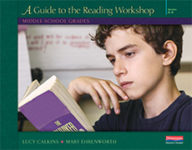In a recent article titled, “Four Ways State Leaders Can Help Teachers Implement High Quality Curriculum,” the author discusses how state policymakers can support the reopening of schools for a successful school year. She encourages policymakers to “Provide clear and simple guidance to ensure all content is standards-aligned and offer examples of what that may look like for in-person and virtual settings.”

As districts searched for new online materials to support at-home learning, technology compatibility may have driven their purchasing decisions. Now that they are having to use the materials, alignment should be an important consideration. Here are three reasons why understanding the standards alignment of materials being used for at-home learning is critical to students’ academic success.






 Which instructional materials is your district considering for reading instruction in middle school? Particularly if you are implementing the reading workshop model, consider Learning List’s review of Heinemann’s Units of Study in Reading Middle School Grades (Units of Study Reading).
Which instructional materials is your district considering for reading instruction in middle school? Particularly if you are implementing the reading workshop model, consider Learning List’s review of Heinemann’s Units of Study in Reading Middle School Grades (Units of Study Reading).